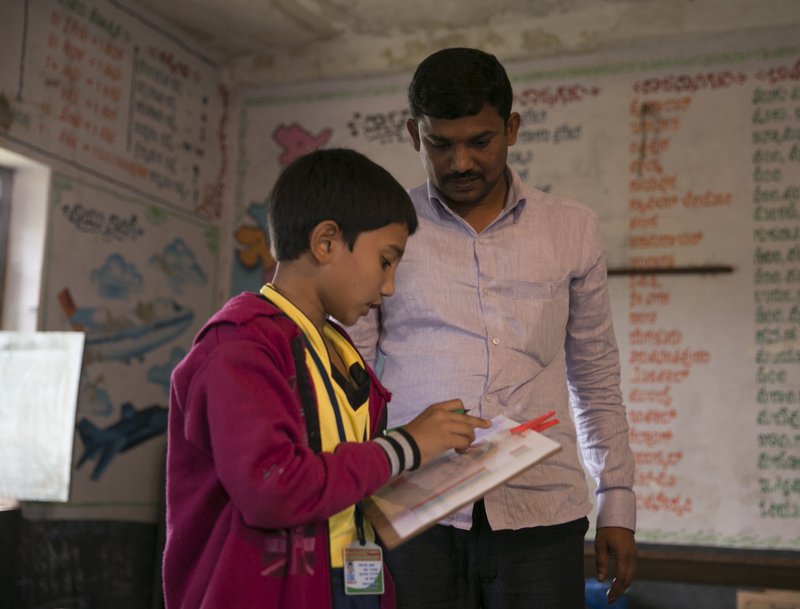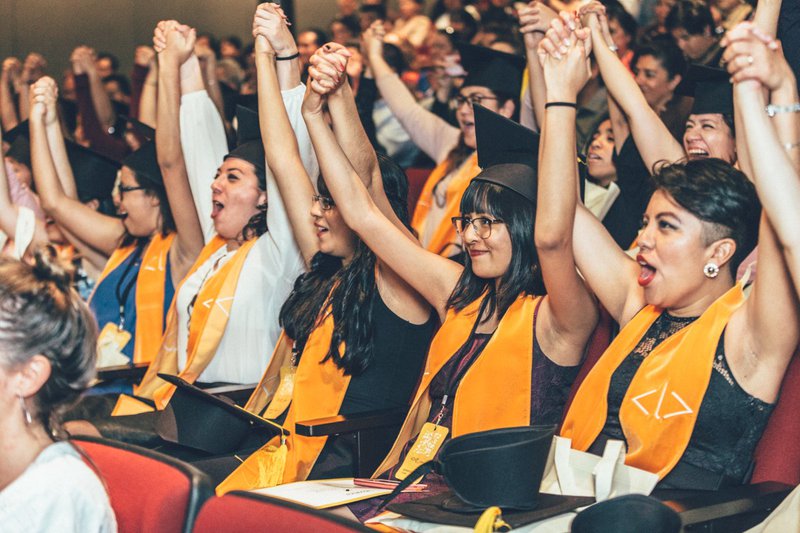EDUpreneurs Wanted

Despite progress over the past 20 years to increase access to education around the globe, we remain in a global learning crisis. According to the UNESCO Institute for Statistics, more than 617 million children and adolescents are not achieving minimum proficiency levels in reading and math.
That’s alarming, but it is just one of the urgent challenges we face; we also have a skills shortage. The Education Commission reports that 40 percent of employers already have difficulty recruiting skilled talent. Contributing to the lack of quality learning is our global teacher shortage; a 2016 UNESCO report estimates the shortage of qualified teachers worldwide at 68.8 million.
The situation looks dire, but I have hope. Entrepreneurs, both for-profit and nonprofit, are seeing the need for change in the education sector and are pushing the boundaries to innovate beyond the current solutions to benefit educators, students, parents, and governments. And we are starting to see investment into this sector, driven by a passion for education mixed with technology expertise. But we need more entrepreneurs and investors — so let me share some of the exciting trends we are seeing.
Entrepreneurs are pushing the boundaries to innovate beyond the current solutions to benefit educators, students, parents, and governments.
User-centric Technology
There is a common misperception that education technology is trying to replace teachers, rather than serving as a tool to improve student learning. But actually, the best innovations are supercharging teachers. In overcrowded classrooms, tech is enabling teachers to better meet the demands of each student — so that those able to excel beyond the standard curriculum can do so, and those struggling can have additional support. It is also allowing more students, particularly the underserved, to be afforded access so they can learn outside traditional classroom environments.
This ability to listen to your users to deliver differentiated and inclusive learning is hugely important in classrooms that are not just overcrowded but also have large and diverse student populations, including those where one teacher in one classroom might serve students across four grade levels. Brazil’s Geekie, for example, applies artificial intelligence and machine learning to understand how students are performing and then redirects that student to appropriate content, based on what they know and don’t know. Geekie has already reached more than 5 million students — many of whom previously had little to no access to personalized learning tools.
As a former VP of Product and User Experience Design at eBay and PayPal, I see the most successful education entrepreneurs taking a customer-centric approach to ensure they are really meeting the needs of teachers, students, parents, and school administrators. This includes not just student-oriented tech, but also systems that help with teacher support, parental engagement, administrative data, and more. Technology, when built and integrated thoughtfully, can help us deliver and sustain education at scale and hopefully help us achieve the UN’s Sustainable Development Goal of quality universal primary and secondary education by 2030.
Outside-the-box Mindsets
We need to be open to how we look at school models and partnerships as ways to dramatically transform learning outcomes. Some new models are working effectively and often at the same or lower price points both within formalized school settings as well as outside those traditional systems. And, public-private collaborations are enabling these models to reach those who need the most help. These partnerships are starting to build momentum as more governments recognize they might need help to deliver a quality education to their younger populations.
SPARK Schools from South Africa is a network of private primary schools for low- and middle-income families. In addition to taking best-in-class teaching methodologies from around the globe, their blended learning model combines traditional classroom teaching with technology, which has allowed them to deliver a quality education at about USD$1,500 per student per year, on par with current government spending at public schools.

In India, Akshara Foundation has demonstrated how partnering with the government can help to scale. Their fourth and fifth grade math solutions combine high-quality teaching and materials with activity-based learning and are supplemented through an online platform for monitoring, assessment, and community engagement. Thanks to government partnership, they have now reached 1 million children in two states in India, with plans to expand within their current districts and additional states to reach 6 to 8 million students by the 2020/21 academic year.

Let’s remember that a quality education starts in early childhood — before children enter kindergarten — and remains a critical period where more innovation is needed. Wonderschool, in the US, is a technology platform that supports and enables new early learning models. By providing early childcare business owners with assistance such as licensing and payment processing, the cost of early childcare can drop, the salaries of educators can rise, and the quality of care can increase as educators spend more time teaching children.

Upskilling for the Future of Work
Our world is changing. The next generation will enter a very different labor market. Artificial intelligence, robotics, globalization, and developments in the gig and sharing economies mean immense change, prompting us to evolve what and how we teach students.
We see more entrepreneurs building online platforms and blended programs that are directly focused on building the skills needed to acquire a job or whole livelihoods. This spans from skills enabling people to enter the digital economy to non-digital skills enabling micro entrepreneurs to build a livelihood. A small but growing group of entrepreneurs are finding innovative ways to ensure equitable access: whether it be with innovative financing mechanisms, such as income sharing agreements, through dramatically different application processes, or incorporating additional skilled learning into corporate benefit packages.
Peru’s Laboratoria is bridging the global skills gap across Latin America. This nonprofit focuses on training low-income women in software development so they can more successfully enter the tech market, and also work with leading businesses to source this newfound talent. In the last three years, Laboratoria has graduated over 800 women across Peru, Chile, and Mexico and placed 75 percent of their graduates with more than 250 companies. Not only are these women unlocking their potential, but in many cases their new tech careers triple their income.

The learning crisis is urgent and we can’t afford to wait or we risk even more unemployment, underemployment, poverty, inequality, and instability. While we are seeing encouraging education innovations, we need more people and systems willing to break boundaries to improve education quality and address the opportunity gap for individuals — and the skills gap facing employers.
We need more “edupreneurs” willing to push boundaries; more governments and communities willing to pursue public-private collaboration; and more financial capital flowing into the sector to provide support.
At Omidyar Network, we are committed to supporting and encouraging these education changemakers — both in the nonprofit and for-profit space — but we need more “edupreneurs” willing to push boundaries; more governments and communities willing to pursue public-private collaboration; and more financial capital flowing into the sector to provide support. According to a 2015 survey by JP Morgan, 58 percent of capital allocated to impact investing flows toward housing, agriculture, energy, and micro-finance — with only 2 percent invested in education. Let’s double-down on education entrepreneurs that are pushing the boundaries; these are investments in our collective future.
Amy will be attending ASU GSV discussing transforming secondary education through skilling models on April 16 as well as how to measure social impact in the education sector on April 18.
Find all of the Omidyar Network education panels at ASU GSV and follow the conversation at #ASUGSV2018.